Bachelor of Science
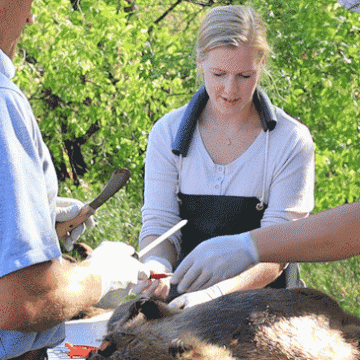
Take a trip to Yellowstone National Park, band live ducks, and study fish in streams with our Fisheries and Wildlife Science degree. Pursue a career in conservation or conservation law and join the ranks of alumni employed with the U.S. Fish and Wildlife Service, National Park Service, U.S. Geological Survey and other organizations. You’ll be prepared for the career of your choice or to pursue an advanced degree upon graduation.
Download Fisheries and Wildlife Program Fact Sheet
$0
0
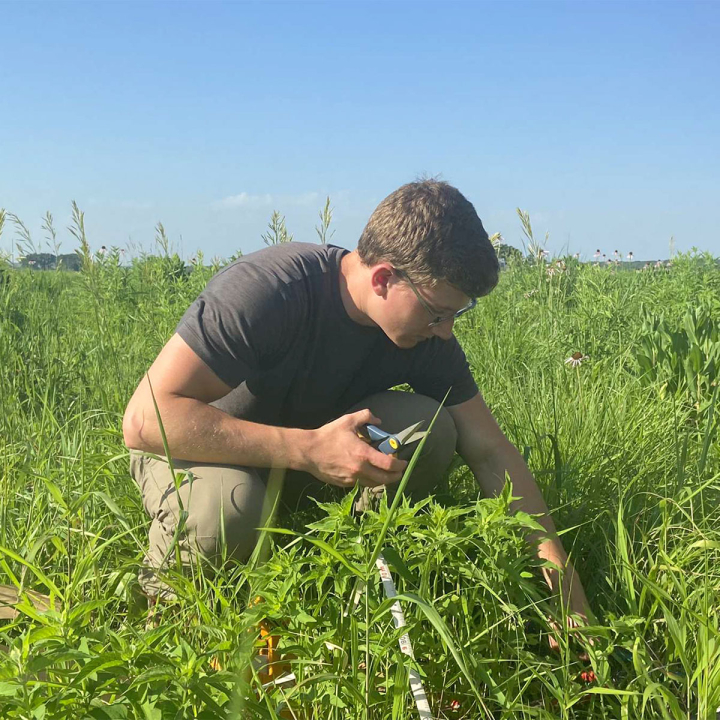
Jacob Knapek: the Plant Guy
Read more about JacobFisheries and Wildlife graduate, Class of 2022
A seed of interest in natural science sprouted in him that eventually lead to Valley City State University. “That fact opened my eyes and made me think of how much we’ve changed the natural world,” Knapek said. “I became passionate about native plants, and I learned about ecological restoration, which is the process of using native plants to restore the environment to what it once was.”
Choose a concentration to match your interest
- Conservation Law Enforcement FocusPrepare for a law enforcement careerJoin the Department of Natural Resources or another organization to assist in the preservation of land and wildlife.Learn More
- Wildlife FocusPrepare for a career in natural resourcesBegin your career in natural resources through our wildlife focus, and learn conservation techniques.Learn More
- Fisheries FocusPrepare for a career as a fisheries professionalLearn the principles of fisheries management with our hands-on experiential major.Learn More
Beyond graduation
Explore the possibilities
Our Fisheries and Wildlife program is designed to help you pursue your dream of having a career in the outdoors, whether that’s with a government agency or a conservation organization. The career possibilities are endless – here are a few opportunities to choose from:
- Wildlife Biologist
- Game Warden
- Natural Resource Technician
- Conservation Officer
- Environmental Scientist
- Wildlife Technician
- Fisheries Technician
Join the American Fisheries Society Student Subunit
Field work with Fisheries and Wildlife
Outdoor Recreation
The Beautiful Outdoors
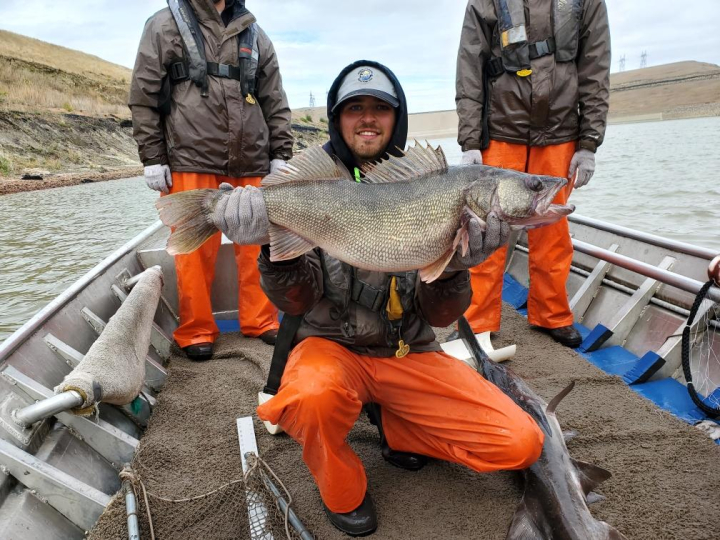 Many of our students enjoy other outdoor activities, such as camping, hiking, canoeing, photography, and birding.
Many of our students enjoy other outdoor activities, such as camping, hiking, canoeing, photography, and birding.
There are multiple campgrounds within an hour of Valley City. They include campgrounds around Lake Ashtabula, Clausen Springs, Little Yellowstone, and Fort Ransom State Park.
Nonresident full-time state college students living in North Dakota and attending a North Dakota institution of higher learning may qualify to purchase non-lottery resident licenses at resident costs! This is a great benefit for nonresident students wanting to hunt and fish while going to VCSU.
Waterfowl
Valley City is located in the heart of the Prairie Pothole Region, which often produces over 50% of North America’s ducks. As a result, we have some of the best waterfowl hunting in the country. You will find amazing opportunities to hunt ducks, geese, tundra swans, and sandhill cranes near Valley City.
Upland Game
There are lots of upland game hunting opportunities in the Valley City area. You will find sharp-tailed grouse, gray partridge, and wild turkey. Pheasants are abundant to the south of Valley City, and the season extends all the way until the first week of January.
Big Game
The most common big game animal in the area is white-tailed deer, although we do have the occasional moose. Many students not only enjoy archery shooting, but also archery hunting for deer in the Valley City area.
Other game commonly pursued by students in the immediate area are mourning doves, rabbits, and squirrels. Fisheries and wildlife students often hunt and fish together, forming life-long friendships.
Fishing
There are numerous opportunities for both summer and ice fishing in the Valley City area.
- Lake Ashtabula Reservoir – yellow perch, northern pike, walleye, white bass, and crappie
- Moon Lake – rainbow trout, yellow perch, and walleye
- Clausen Springs – largemouth bass, and yellow perch
- Hobart Lake Refuge – Only ice fished, and often great for yellow perch
Meet a Fisheries and Wildlife Alum

Kyle McLean, '11
The focus is on mentoring and preparing students not only to have the academic knowledge base to be a professional, but to outline the steps needed to end up where you want to end up. You could become a scientist, or be on the ground managing a landscape.
Where you'll study
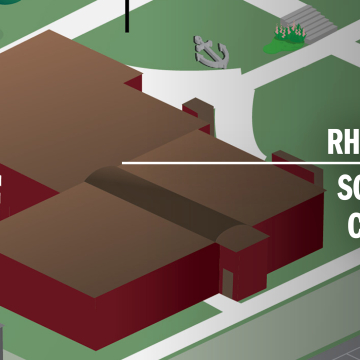
Plan of Study
First Year
- Introduction to Fisheries and Wildlife Sciences
- General Biology I & II
- Introduction to Computer Information Systems
- College Composition I
- Viking Voyage
- Fisheries and Wildlife Techniques
- Fundamentals of Public Speaking
- Introduction to Professional Writing
Second Year
- Aquatic Entomology
- Ichthyology
- General Chemistry
- Precalculus
- General Zoology
- Fisheries Management
- General Chemistry II
- Social Science
Third Year
- Botany
- Conservation Biology
- Limnology
- Literacies
- Social Science
- Environmental Law and Regulations
- Introduction to GIS
- Introduction to Organic and Biochemistry
- Concepts of Fitness and Wellness
Fourth Year
- Art and Music
- Field Ecology
- Integrated Science Capstone
- Introduction to Media Writing
- Applied Calculus I
- Additional Humanities or Social Science
- Human Dimensions in Fisheries and Wildlife
- Biostatistics and Experimental Design
Directed Electives (BIOL)
First Year
- Introduction to Fisheries and Wildlife Sciences
- General Biology I & II
- Introduction to Computer Information Systems
- College Composition I
- Viking Voyage
- Fisheries and Wildlife Techniques
- Fundamentals of Public Speaking
- Introduction to Professional Writing
Second Year
- Botany
- Mammalogy
- General Chemistry
- Precalculus
- General Zoology
- Introduction to GIS
- Applied Calculus I
- Social Science
Third Year
- Conservation Biology
- Range Management and Range Plants
- Elective
- Humanities
- Social Science
- Ornithology
- Environmental Law and Regulations
- Biostatistics and Experimental Design
- Concepts of Fitness and Wellness
Fourth Year
- Field Ecology
- Wildlife Management
- Integrated Science Capstone
- Introduction to Media Writing
- Humanities
- Additional Humanities or Social Science
First Year
- Introduction to Fisheries and Wildlife Sciences
- General Biology I & II
- Introduction to Computer Information Systems
- College Composition I
- Learning to Live
- Fisheries and Wildlife Techniques
- Fundamentals of Public Speaking
- Introduction to Professional Writing
Second Year
- Mammalogy
- General Chemistry
- Introduction to the Social and Criminal Justice System
- Introduction to Sociology
- Precalculus
- General Zoology
- Criminology and Delinquency
- Public Relations
- Concepts of Fitness and Wellness
Third Year
- Conservation Biology
- Ichthyology
- State and Local Government
- U.S. Constitution: Civil Liberties
- Ornithology
- Environmental Law and Regulations
- Introduction to GIS
- Introduction to Psychology Lab
Fourth Year
- Botany
- Field Ecology
- Integrated Science Capstone
- Introduction to Media Writing
- Humanities
- Additional Humanities or Social Science
- Human Dimensions in Fisheries and Wildlife
- Introduction to Organic and Biochemistry
- Elective
Humanities
Meet an advisor
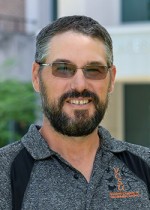
Fisheries and Wildlife Science, Science
- Rhoades Science Center 203A
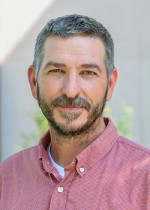
Fisheries and Wildlife Science, Science
- Rhoades Science Center 203E

Fisheries and Wildlife Science, Science
- Rhoades Science Center 203F

Fisheries and Wildlife Science, Science
- Rhoades Science Center 203D
Accreditation
A college education is an investment in yourself. Making sure your education is high-quality can be difficult, but not at VCSU. We are proud to be accredited by numerous institutions, and with that accreditation comes the assurance you’re receiving the highest quality education that will prepare you for your career.